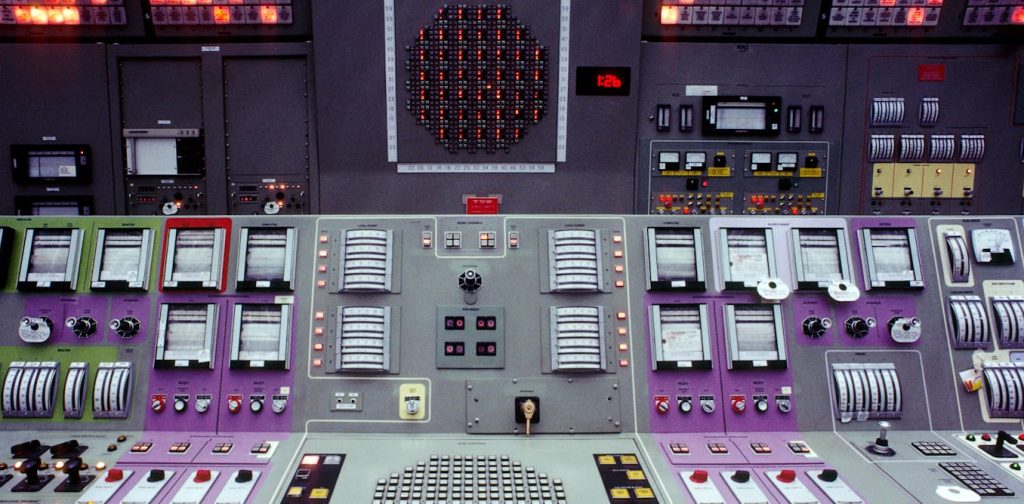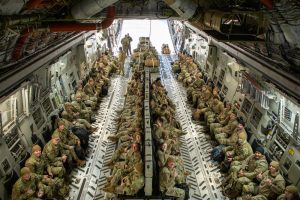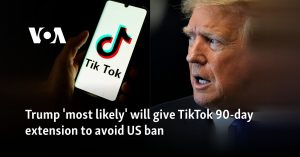Seventy years ago, on December 8 1953, US president Dwight D. Eisenhower delivered a speech to the United Nations general assembly, setting out his concerns about “atomic warfare”.
In the speech, later known as Atoms for Peace, he outlined a plan for new forms of international cooperation around nuclear technology, calling for “lasting peace for all nations, and happiness and well-being for all men”.
In 2023, nuclear technology has been very much in the headlines, from the potential of nuclear threats during the war in Ukraine to cinematically capturing the history behind the first atomic bomb in Oppenheimer.
The speech is largely forgotten but it fundamentally shaped the nuclear world we live in today, and remains highly relevant to how decision-makers engage with such cross-border developments as generative AI. For all their differences, when they were created both nuclear reactors and AI represented newly emerging technologies that “spurred a global race for dominance”, fundamentally challenging existing systems and with potential for both peaceful and military uses.
Why the speech happened
In 1953, eight years after the second world war, an armistice concluded the Korean War (1950-1953) but the wider cold war was characterised by an accelerating nuclear arms race. US nuclear technology was under tight control, restricting any exports, even to wartime allies.
Nuclear reactors mainly created fuel for warheads. The first power plants and first nuclear submarines were only just being constructed.
Eisenhower’s speech, and the US Atoms for Peace programme that followed, completely changed this, proposing a sharing of technology and nuclear material with different countries. There was wide dissemination of Eisenhower’s words beyond the UN.
Hundreds of thousands of pamphlets of the speech were sent out, printed in ten languages. US and foreign media were inundated with information and advertising.
Public spread of ideas
One of the speech’s public legacies was encouraging wider public engagement with the idea of what “nuclear” actually was. This inspired new popular culture and educational materials promoting ideas of atomic-powered futures, such as the iconic Walt Disney 1956 science book and TV programme Our Friend the Atom.
Eisenhower’s speech called for a UN-based International Atomic Energy Agency (IAEA), eventually founded in 1957, promoting peaceful nuclear use while discouraging weapons proliferation. It remains a crucial international entity in nuclear verification, nuclear safety, and promotion of peaceful uses of nuclear technology, most recently through activities such as monitoring the safety of the Zaporizhzhia nuclear power plant during the Ukraine war.
Paradoxically, however, Atoms for Peace also had opposite effects. The reactors and technical expertise, supplied for civilian energy or research, provided crucial foundations for proliferation.
The tools and knowledge were repurposed by some countries to develop their own nuclear weapons, including, in the first instance, India and Pakistan. Israel is widely believed to have benefited, although it continues to deny it has nuclear weapons.
One of the speech’s most visible impacts was in signalling, both to domestic and international audiences, a significant change in US policy towards supplying other nations with nuclear science.
It paved the way for the restrictive US Atomic Energy Act to be revised the following year, to allow sharing of technology and building of reactors in different countries. This significantly increased global development of nuclear power and nuclear research in areas from agriculture to medicine.
However, it’s worth remembering that Atoms for Peace took place in parallel with a wider US cold war strategy of pursuing nuclear superiority. Just over a month before his UN speech, Eisenhower approved a significant expansion in America’s nuclear arsenal.
Warhead numbers increased from around 1,100 to more than 18,000 during his presidency. He also considered the potential use of nuclear weapons in conventional conflicts.
Peaceful shared plans
Eisenhower also tried to set up an international uranium bank, with US and Soviet joint contributions from their stockpiles of “normal uranium and fissionable materials”. These would be contributed to a pool, shared with other countries for peaceful purposes, both to help restrict the arms race and “provide abundant electrical energy in the power-starved areas of the world”.
However, this bank was never created, partly because of Soviet concerns that it would continue to allow US leadership of nuclear weapons technology. Instead, bilateral agreements were struck to supply nuclear energy and materials.
Unfortunately, spreading “peaceful” technology, supplying nuclear reactors and material for energy and civil research, became a cold war and commercial “weapon”, aiming to tie uranium and technology exports to fulfilling conditions or continued dependence on the selling countries to supply fuel.
Read more:
Are small nuclear reactors the solution to Canada’s net-zero ambitions?
Ironically, this echoed one US fear which had helped motivate Atoms for Peace: the prospect of the Soviet Union sharing nuclear energy as a way of influencing other countries and creating alliances.
These developments are particular relevant today. Russian attacks on Ukraine’s nuclear power plants during the current war have received much attention, but what is less well known is Russia’s nuclear energy empire, with contracts and construction spanning 54 countries.
This has remained “largely below the sanctions radar”, while remaining a significant source of international influence for Russia.
Nuclear’s reach today
As of November 2023, approximately 10% of the world’s energy was supplied from more than 400 nuclear reactors, while 40 million nuclear medical procedures are performed each year, using radioactive materials to diagnose or treat different diseases.
In 2023, policymakers continue grappling with related nuclear issues, whether proposals for new small modular nuclear reactors, nuclear power in space, debates around potential for nuclear power in addressing climate change or fears of new nuclear arms races.
Faced with such challenges, Eisenhower’s words: “If a danger exists in the world, it is a danger shared by all; and equally, that if hope exists in the mind of one nation, that hope should be shared by all” seem as relevant today, as they did in 1953.





